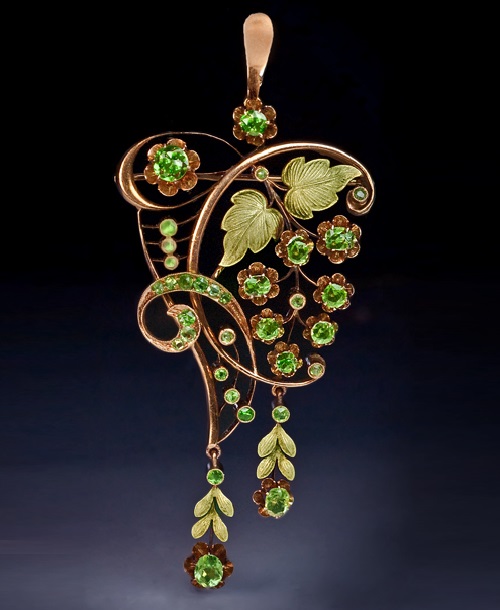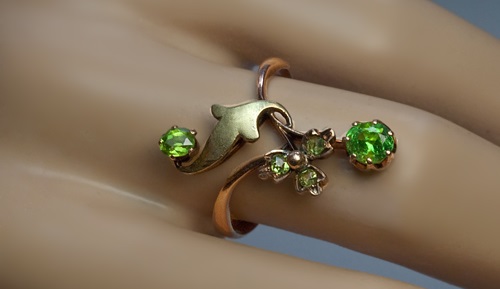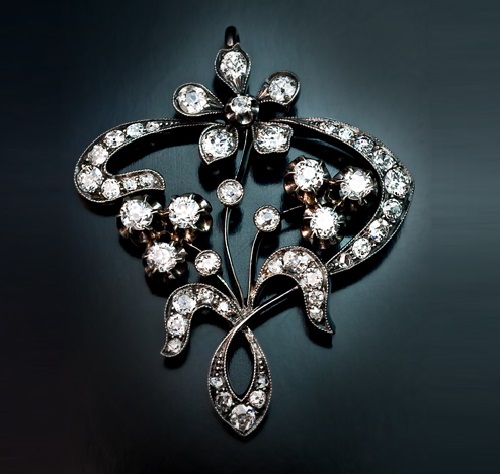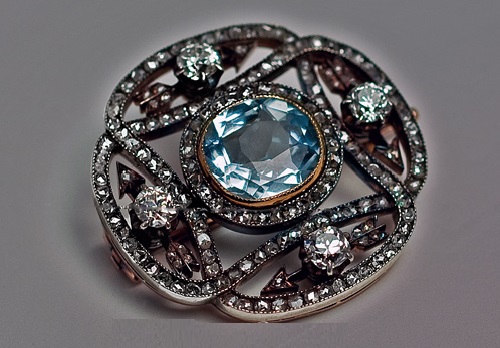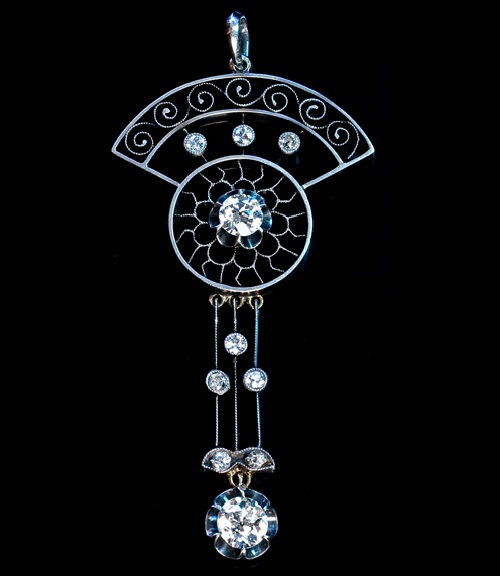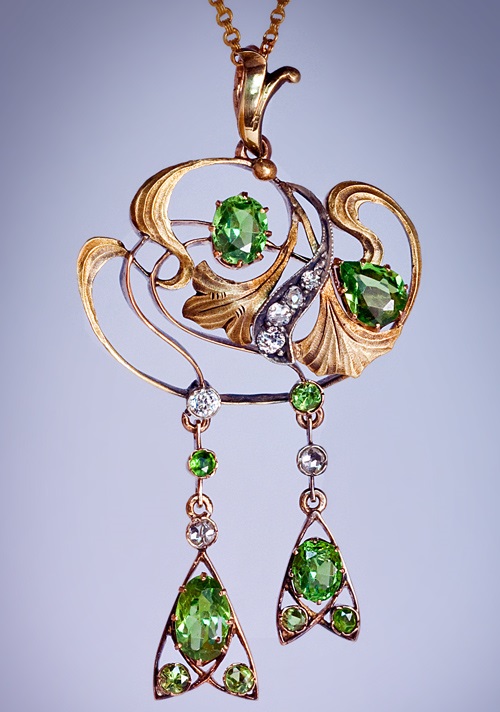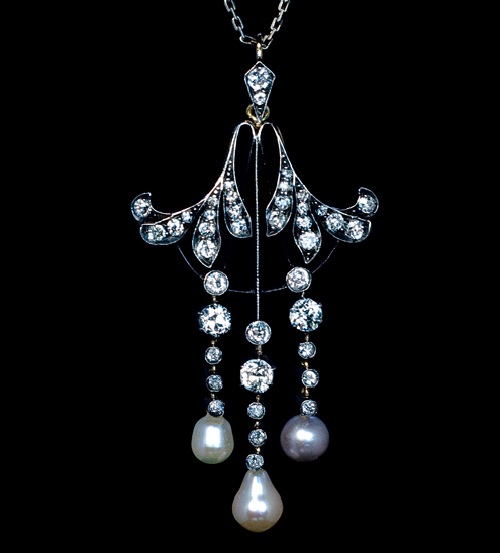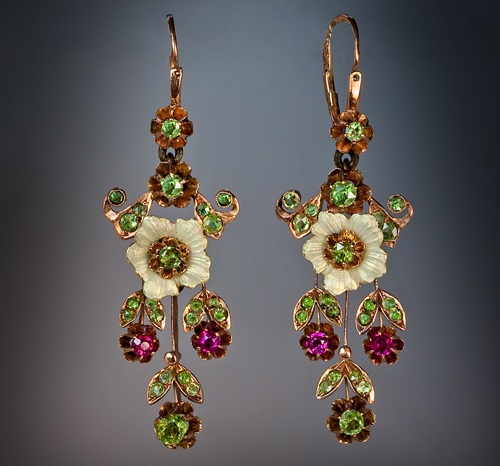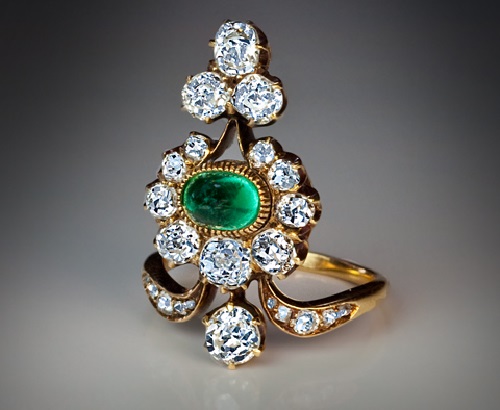Russian Art Nouveau jewellery
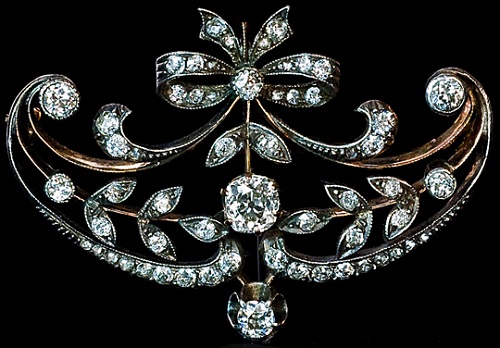
Belle Epoque handcrafted Diamond Brooch Pin. Moscow, 1908 – 1917. Marked with initials ‘AM’ for Moscow jeweler Alexander Moskvin. Russian Art Nouveau jewellery
Russian Art Nouveau jewellery
Noteworthy, Art Nouveau Jewellery has “geographical” features. French Art Nouveau jewellery, for example, by Lucien Gaillard, Georges Fouquet, is masterly asymmetrical, while “the German mind” (Wilhelm von Cranach Lucas) tends to symmetry. Palette also varies, and in Russia it is different than in Europe.
Russian Revival Style of the 1910s, called Neo-Russian Modern was influenced by medieval Russo-Byzantine tradition. Produced in Moscow in 1908-1917, the period before and during the World War I, Russian medieval designs and shapes were mixed with typical Belle Epoque forms and elements. The result was a unique Russian jewelry style not seen anywhere else.
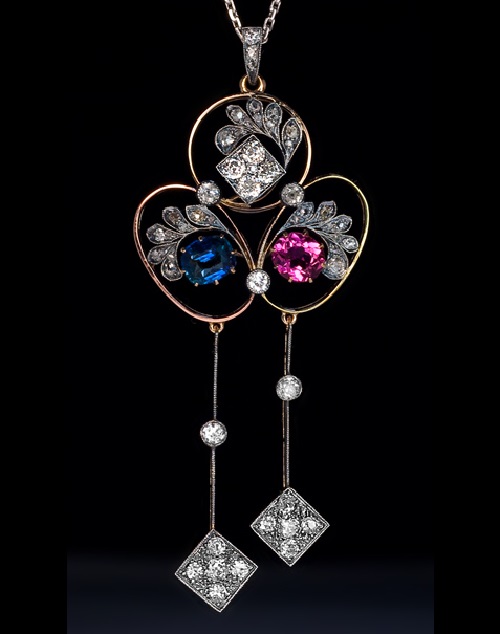
A Belle Epoque Antique Negligee Pendant, circa 1900. Gold, silver, sapphire, pink tourmaline, diamonds
Personal archive of a renowned jeweler Faberge disappeared in the revolution. Besides, the memoirs of Carl Faberge contemporaries remained closed. But the history of masterpieces of Faberge brand has become worthy plot of the adventure novel.
To a new life Carl Faberge took a small bag with him. “Hopefully, with your baggage nothing will happen, – said the Englishman, nodding at the bag”. Even Bolsheviks did not dare to search diplomatic Courier.
Russian Art Nouveau jewellery
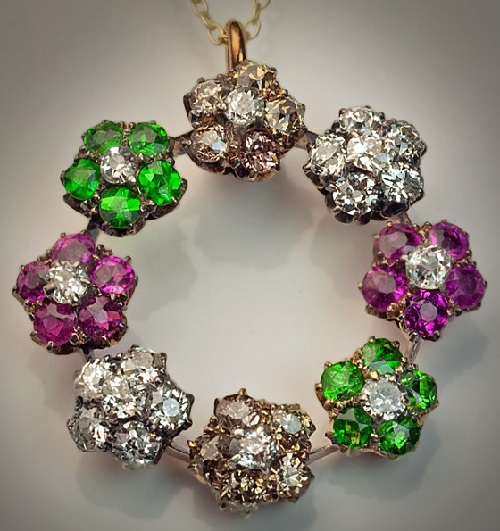
Gemstone Gold Pendant Necklace, circa 1900. White, golden-brown, green color diamonds, pink sapphire
A good three decades Carl Faberge remained on the crest of popularity. Among his regular customers were the Bulgarian king, heir to the Austro-Hungarian kings and queens of England, Italy, Spain, Greece, Denmark, Norway and Sweden, as well as the King of Siam Chulalonghorn.
“Anyone can buy my jewellery, because there are quite inexpensive items!” With the ease of a true artist Faberge gave equal rights to semi-precious gemstones, diamonds with glass, porcelain, bone, enamel. “If you compare my jewellery with such companies as Tiffany, Boucheron, Cartier, then they are probably more jewelry than mine. – He said in the same interview. – There can be found ready-made necklace for a half million rubles. But they are dealers and jewelers, but not artists!”
Russian Art Nouveau jewellery
Russian Art Nouveau jewellery
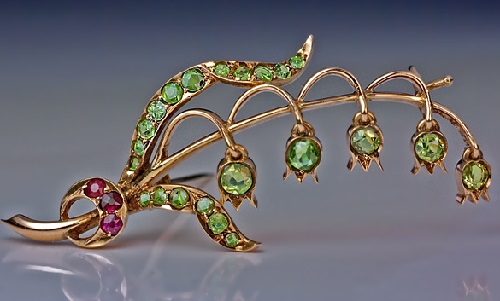
Lily of the Valley Brooch-Pin. St. Petersburg, 1908 – 1917. Gold, Uralian demantoid garnets, synthetic rubies
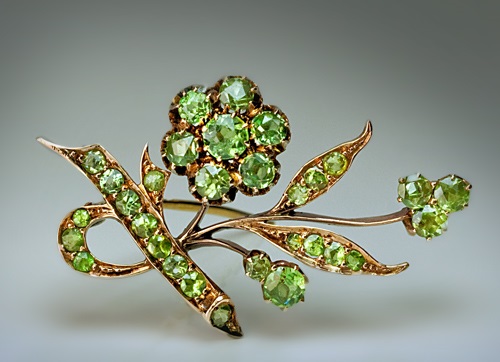
Brooch. Kazan, 1899 – 1908. Gold, Ural demantoid. Marked with initials ‘И А’ for master Ivan Ado (1899-1908)
Russian Art Nouveau jewellery

Lily brooch. Gold, silver, sapphire, diamonds. 1899 – 1903. Carl Faberge firm. Russian National Museum. St. Petersburg

Beetle brooch. Gold, rubies, sapphires, diamonds, moonstone, pearl. 1898. Faberge Firm. Russian National Museum. St. Petersburg
Here is one of 52 Easter eggs made for Alexandra in 1898 as the imperial Faberge gift. It was the first in the series of jewelry and interior products named “Lilies of the Valley Faberge style.” The egg of gold-coated translucent pink guilloche enamel, on a gold stand with four legs, decorated with lilies of the valley of green enamel, gold and freshwater pearls.
Faberge made this egg in uncharacteristic Art Nouveau style, but after he got sick with “floral theme” . And not only with lilies of the valley, but also pretty posies, twigs, standing in crystal glasses, vases that look quite alive, just frozen in eternity.

